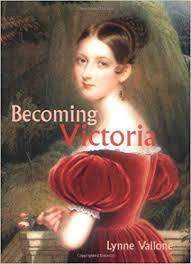Becoming Victoria
Listen to the Recess! Clip
| Author | John Cech (read by Fiona Barnes) |
| Air Date | 7/17/2001 |

Becoming Victoria Transcript
As a young girl in England, steeped in British history and the necessary adulation of the Royal Family, I was never particularly fond of Queen Victoria. After all, in my young eyes, Queen Victoria seemed to have been born old, dour, and fully clothed in black satin; it also didn’t help that her most famous saying, “We are not amused,” was hardly designed to endear her to young readers. Imagining this Queen of Great Britain and Empress of India as a young girl was not something we were often invited to do, and if we were, she was presented as a perfect pattern child who could do no wrong.
However, after reading two books on the girlhood of Queen Victoria which appear at the centenary of her death — one just published and once recently re-printed–I am much more sympathetic to a woman who was deliberately misrepresented by her supporters–either as a silly and helpless young girl, or as a model of all virtues–in order to secure control of the throne of England in difficult political times. Lynne Vallone’s detailed biography, Becoming Victoria, sets out to explore how Victoria’s girlhood shaped the British queen, through careful readings of Victoria’s own words in her letters, stories, and journals. Victoria’s letters and journals, often written in a breathlessly girlish style, full of enthusiastic capitals and italics, reveal a constant tension between intellect and emotion, between private and public spheres. After all, one learns from Vallone’s book that it was the fashion of the 19th Century not to smile for photographs and portraits, and women in particular were expected to show dignity and restraint by smiling with a closed mouth. Victoria became quite good at this.
The strength of the second book, Alison Plowden’s The Young Victoria lies in its exciting narrative style: it makes Victoria’s strivings for independence read like an unfolding mystery story, and it reveals just how early Victoria showed her famous capacity not to be steered in a direction that she did not want to take.
So for the anglophiles and historians, those interested in how childhood has changed since the nineteenth century, or those who simply want to know when and where it was that the young girl Victoria actually said “I was very much amused,” I recommend these two portraits of a young girl who seems both a universal and a singular figure in her heroic struggles for an independent identity.